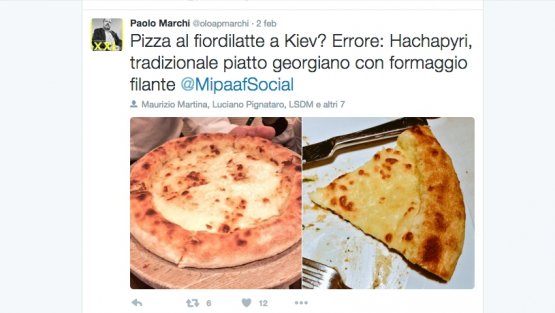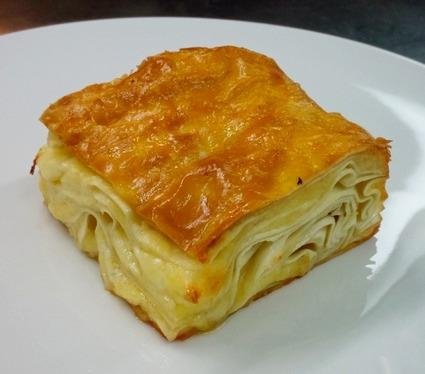Following Fontegro, we are writing with Paolo Marchi. When I read “At Shoti they told us that was not a white pizza, but a traditional Georgian plate”, - distinct distrust to the served khachapuri rings in every letter. To serve a pizza to Italians and call it a Georgian native dish! I hurry to reassure the authoritative Milanese gastronome that, indeed, Georgia bears ancient traditions of what may look like pizza-making, but has nothing to do with it.
So the article on khachapuri becomes relevant. While preparing it, I come to conclusion that there is no such dish as khachapuri. But there is such thing, and it is ancient.
It is as old as the combination of “khacho” and “puri”, cheese and bread in Georgian. Let’s look into the basics, the bread. There is no proper recipe or rules for preparing bread for khachapuri, unlike verace pizza napoletana. Most chefs make it with yeast. The trick is to avoid making a bun instead of solid base that will perfectly marry cheese. Only a few manage to deal it, no matter in Georgia or Ukraine, where Georgian bread kiosks are at every turn.

Paolo Marchi's tweet: it's where our story begins
For the sake of exploring the subject I am at
Shoti in company of the chef
George Khuchua and, of course,
khachapuri. This time it’s
Adjarian one, favourite guilty pleasure: white flour bread, melt cheese, butter, yolk, altogether in a shape of a boat, or an eye. Hot filling is quickly mixed by the waiter and I can crush the crust to dip the cheese out. Mmh.
George teaches me the proper way to finish the khachapuri (yes, there may be no proper way to make the dough, but there is the right way to eat). One has to roll up the bottom with remains of cheese into a tube.
Typical cheese used in khachapuri is most usually chkkhinti or Imeretian. It’s young and soft one, soak it in hot boiled water and you can knead suluguni, next kind of cheese, firm, layered and elastic.
But we started with the bread. At homes, the dough will usually be based on sour milk – matsoni. This kind of khachapuri is baked in a dry pan like Moldovan placintas and is closed (like calzone). At the same time penovani, a type of city square khachpuris spread in Tbilisi, use puff pastry sheets.
As a matter of fact, small Georgia is multinational, and the language spoken at different regions will not be understood by the neighbours. Inhabitants of Svanetia also speak their own language – and it’s not written. I remember photo from the 30s: a horse pulling a huge pile of brushwood, no wheels attached. Svans prefer ancient habits and would hardly swap their meat filled kubdari for other kind of khachapuri or pizza.

Achma, a kind of khachapuri made with a thin rolled soft egg dough. Doesn't it look like a white lasagna?
Other kinds of
khachapuri are also traditional. Imeretians make closed
khachapuris, Megrelians also do, and top them with more cheese. Gurian
gvezeli are open and crescent-shaped, with boiled egg. Adjarian cuisine is so much cheese-based, the bread can be skipped in some dishes. Soak chechel cheese in boiling water, drain. Pour nutty fried butter over it, ready.
One more type of khachapuri, achma, is made with thin rolled soft egg dough. Large layers are first boiled, then quickly chilled in cold water and left to drain well. Then layered with a mix of cheeses and baked. What does it look like? Absolutely like white lasagna. If there is still someone who insists that khachapuri is pizza, than he has to admit that pizza is lasagna. I suggest staying on the safe side of cheese and bread, combined in traditional Georgian ways.